WordPress 5.9 Full Site Editing Update Delayed Until Late January
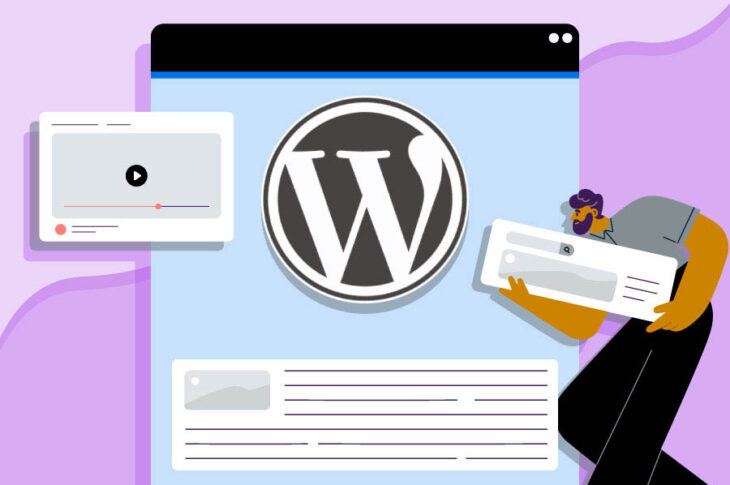
WordPress recently announced the delay of its hotly-anticipated Full Site Editing update. While the developers had initially scheduled this release for mid-December, the updated product roadmap now shows the launch of version 5.9 on January 25, 2022.
WordPress 5.9 will introduce Full Site Editing (FSE) — a critical update that should make it easier to customize and modify WordPress sites without the need for any custom coding. With the addition of this functionality, the platform moves even closer to becoming a fully-featured website development kit.
In this post, we’ll discuss some of the most significant updates coming in WordPress 5.9 and what they mean for existing WordPress users. Let’s take a look!
Want a Free Theme?
When you host with DreamHost you get access to our WP Website Builder tool and more than 200+ industry-specific starter sites for free!

What You Need to Know About WordPress Full Site Editing
In the past, users have had to customize WordPress primarily through themes or custom programming. While themes typically provide some customization features, they vary widely in what they allow. That’s why many users choose page builder plugins to get more control over their sites’ look and layout.
WordPress 5.0 took a big step in the direction of providing that kind of functionality, thanks to the introduction of the new Block Editor. However, this editor was initially designed for modifying pages and other post types, as well as widget areas. That means the platform has lacked an easy way to fully customize the other areas of your site without additional plugins.
However, that won’t be true for long. WordPress 5.9 will come with a new Full Site Editing function, letting users update and redesign their websites through a simple drag-and-drop interface. Full Site Editing should make it easier for a non-programmer to design their WordPress website without relying on their theme, custom code, or a page builder tool. Even better, this functionality will function similarly to the existing WordPress Block Editor, making it easy to learn.
Of course, that’s not all WordPress 5.9 will include. There are also several quality-of-life features on the way, such as improved image compression. Unfortunately, the 5.9 update is complicated enough that some bugs and challenges have led to delays.
Related: 10 Web Design Lessons You Can Learn From StarWars.com
WordPress Full Site Editing Update Delayed
At the time of this writing, WordPress developers have delayed the 5.9 update until next year due to open issues and blockers. WordPress is an open source platform, so its development is very visible. At any time, you can see the features the developers are working on, the status of each new feature, and how the developers are resolving them.
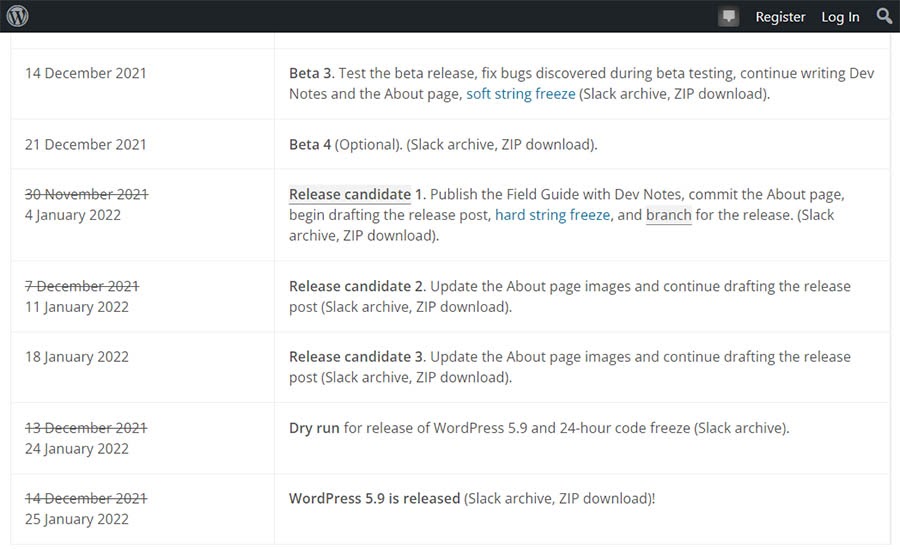
Due to challenges with this particular version, the WordPress team decided to delay WordPress 5.9 instead of shipping it before the holidays. If they had opted for the latter, the features intended for WordPress 5.9 would have ended up in WordPress 6.0 instead. WordPress 5.9 would have simply contained bug fixes and some minor functionality updates.
Fortunately, the project has only been delayed until January 25, 2022 — about a month after the initial projected release date. Plus, this delay comes with good news: The most anticipated features will still make it into version 5.9.
Related: How to Create Your First WordPress Plugin
What to Expect from WordPress Full Site Editing (3 Features)
Full Site Editing will make it easier to customize WordPress sites than ever before, without the need to rely on third-party tools. It also shouldn’t disrupt your existing website. If you’re wondering what to expect, let’s discuss the three most popular features still coming in WordPress 5.9.
1. You’ll Have More Control Over the Way Your Site Looks
Today, you can edit your posts with WordPress’ WYSIWYG editor. As we mentioned earlier, the developers dramatically revised this editor in the 5.0 update.
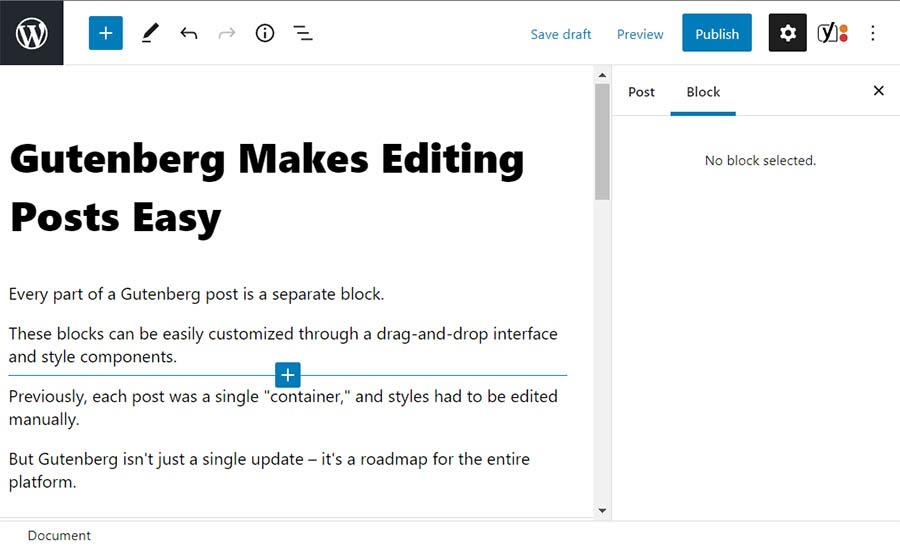
However, you still need a theme to change how your WordPress site looks overall. Users modify their themes through the “Theme Customizer,” which may contain only a few options or a lot of choices, depending on what a given theme’s developers opted to provide.
With the new WordPress FSE feature, you’ll be able to edit your page layouts through a drag-and-drop interface. For example, you might place widgets in certain areas, control the positioning of your header, or modify the size and position of your text.
Classic themes will still remain relevant, but you will have more granular control when it comes to personalizing those themes. Rather than having to hope that the WordPress theme developer made it possible to edit your site’s color scheme, for instance, you’ll be able to do that yourself. Not only that, you’ll also be able to copy ready-to-go layouts, called Block Patterns, and paste them directly into the Full Site Editor.
Over the long term, this also means that the nature of block themes may change. They’ll likely become broader, more feature-focused, and visually non-specific (providing more of a “blank slate” to work with).
Related: How to Pick the Right WordPress Theme for Your Website
2. You’ll Be Able to Change Styles Through a Global Styles Interface
In WordPress, a site’s overall “style” consists of font faces, font colors, font sizes, and formatting. For example, a header might be in “14-point, blue Trebuchet, centered”. Not all themes make it possible to edit the default style, yet it can significantly impact how the site appears to visitors.
Currently, if you want to edit these details — and your WordPress theme doesn’t let you do so — you would need to customize your site’s style sheets. This requires some knowledge of CSS, a markup language.
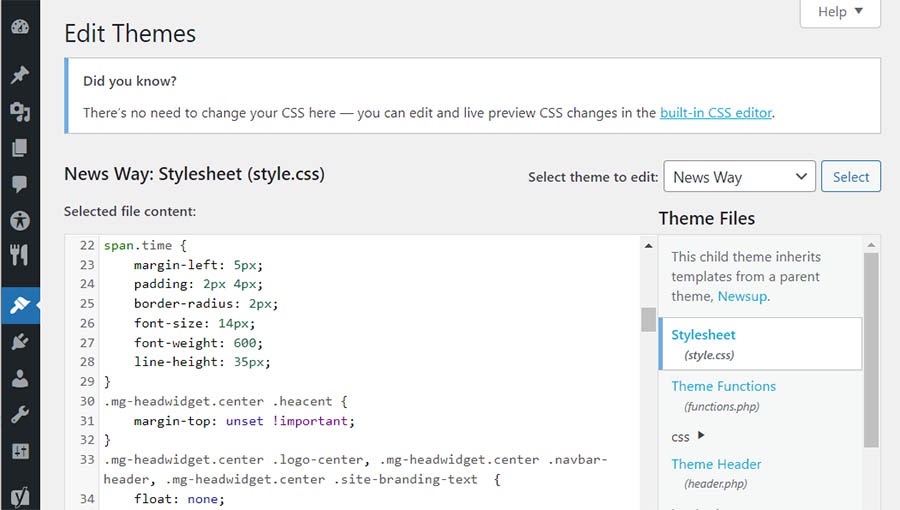
Now, a “Global Styles” interface will be provided to make changing fonts, colors, sizes, and other stylistic elements easier. The end result is that WordPress sites will be more customizable and look more distinct. You will be able to “brand” your WordPress site more easily — and won’t need to dig into the code to do so.
Of course, themes (or plugins) will still be necessary to create more complex elements, such as slideshows or scrolling news tickers. However, block themes are likely to become more focused on back-end design (such as how data is controlled and manipulated) rather than front-end design (such as how the site actually looks).
Related: How to Create a Brand Style Guide for Your Website
3. You’ll Have Better Access to WordPress’ Design Tools
Last but not least, WordPress 5.9’s typography, spacing, color, and layout tools will be integrated into existing blocks. This should make creating a consistent design that spans your entire site easier.
The WordPress Gutenberg Block Editor has been, up to this point, based around creating and manipulating blocks of content. A “block” is a discrete element or piece of content, such as a header, paragraph, or image.
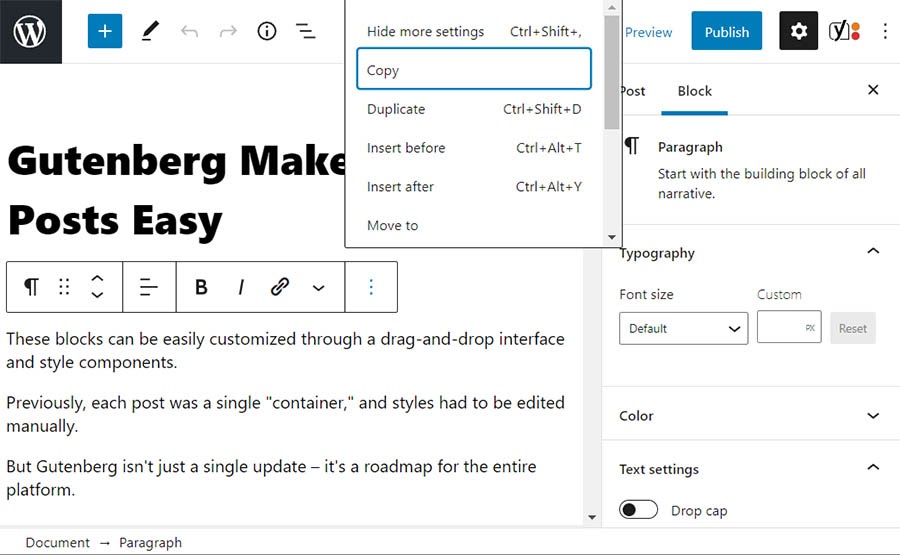
Now, you will be able to more easily edit these blocks across your entire site, rather than just on your pages and posts. Additionally, WordPress has improved the individual components used to edit those blocks, such as the WordPress Color Picker. These individual components were previously introduced to the Block Editor (by way of the Gutenberg plugin) and are meant to spread throughout the platform.
These blocks will make it easier to customize your site’s content. Thanks to the drag-and-drop interface, you won’t need to know how to add code. Plus, you’ll be able to see how your changes look immediately.
Bulletproof Website Backups
DreamPress, our managed WordPress hosting solution, makes it easy to protect and restore your site with automated and on-demand backups.

What to Expect from the Future of WordPress Full Site Editing
WordPress developers first created the platform as an easy way to build a simple blog. However, it’s become a fully-featured Content Management System (CMS) over the years. It now supports major community sites, e-commerce stores, and much more.
Full Site Editing will move WordPress even closer to becoming a full website development kit — a platform that can create any type of web application with ease. Other competitors within this space include website builders such as Squarespace, Wix, Weebly, and more.
Not everyone found it easy to adjust to the initial Block Editor (“Gutenberg”) updates. However, they’ve slowly become part of most WordPress users’ experience. Over the long term, the WordPress Gutenberg project rollout is being managed in four phases.
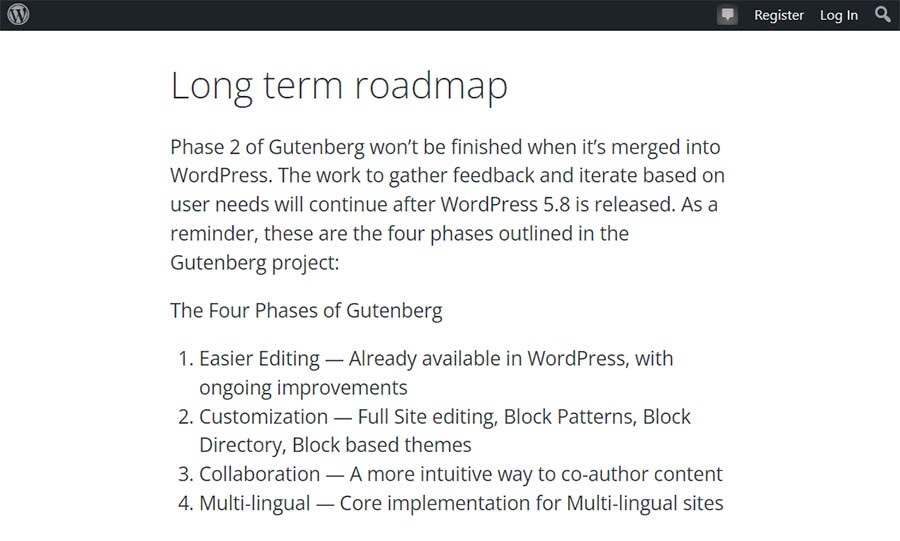
WordPress 5.9 will bring Gutenberg to the customization stage (Phase 2). Once this update is rolled out and perfected, we are likely to see more features designed to enhance collaboration during the design and content creation process, as well as better WordPress core support for multilingual sites.
Related: Want to Translate Your Site? Here’s the Ultimate Guide to Website Localization
Conclusion
If you’re interested in learning more about the functionality of WordPress 5.9, you can download and test the beta version. Just note that it isn’t currently considered “stable”, so you’ll want to experiment with it on a staging site (not your live website).
Alternatively, you can simply wait for WordPress 5.9 to drop. As we’ve seen, it will include exciting new features such as:
- The ability to easily choose from the Block Pattern directory and modify your site’s layout.
- A Global Styles Interface to simplify changing fonts, colors, sizes, and other stylistic elements
- New, responsive tools integrated into blocks
Are you ready to start building your WordPress site? Our DreamPress managed WordPress hosting is the perfect way to start. Not only do we provide 24/7 WordPress support and free automated WordPress migrations, but our WP Website Builder can help you start building your website today — even without WordPress Full Site Editing.